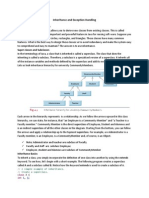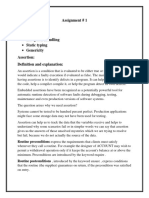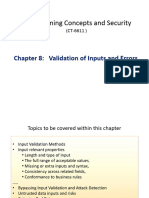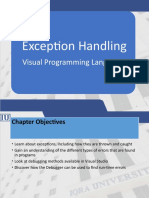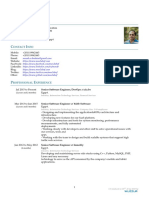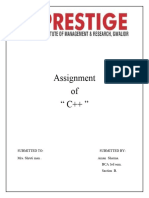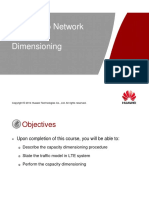0% found this document useful (0 votes)
34 views7 pagesComprog Yehey''
The document discusses debugging concepts and techniques essential for identifying and rectifying errors in programming, emphasizing the importance of understanding the problem, utilizing debugging tools, and employing various techniques such as backtracking and rubber ducking. It also covers basic exception handling in Java, explaining the difference between errors and exceptions, and detailing the use of try, catch, and finally blocks for managing errors during program execution. Examples illustrate how to implement exception handling in code, highlighting the significance of proper error management in software development.
Uploaded by
loue lasdacanCopyright
© © All Rights Reserved
We take content rights seriously. If you suspect this is your content, claim it here.
Available Formats
Download as PDF, TXT or read online on Scribd
0% found this document useful (0 votes)
34 views7 pagesComprog Yehey''
The document discusses debugging concepts and techniques essential for identifying and rectifying errors in programming, emphasizing the importance of understanding the problem, utilizing debugging tools, and employing various techniques such as backtracking and rubber ducking. It also covers basic exception handling in Java, explaining the difference between errors and exceptions, and detailing the use of try, catch, and finally blocks for managing errors during program execution. Examples illustrate how to implement exception handling in code, highlighting the significance of proper error management in software development.
Uploaded by
loue lasdacanCopyright
© © All Rights Reserved
We take content rights seriously. If you suspect this is your content, claim it here.
Available Formats
Download as PDF, TXT or read online on Scribd
/ 7









